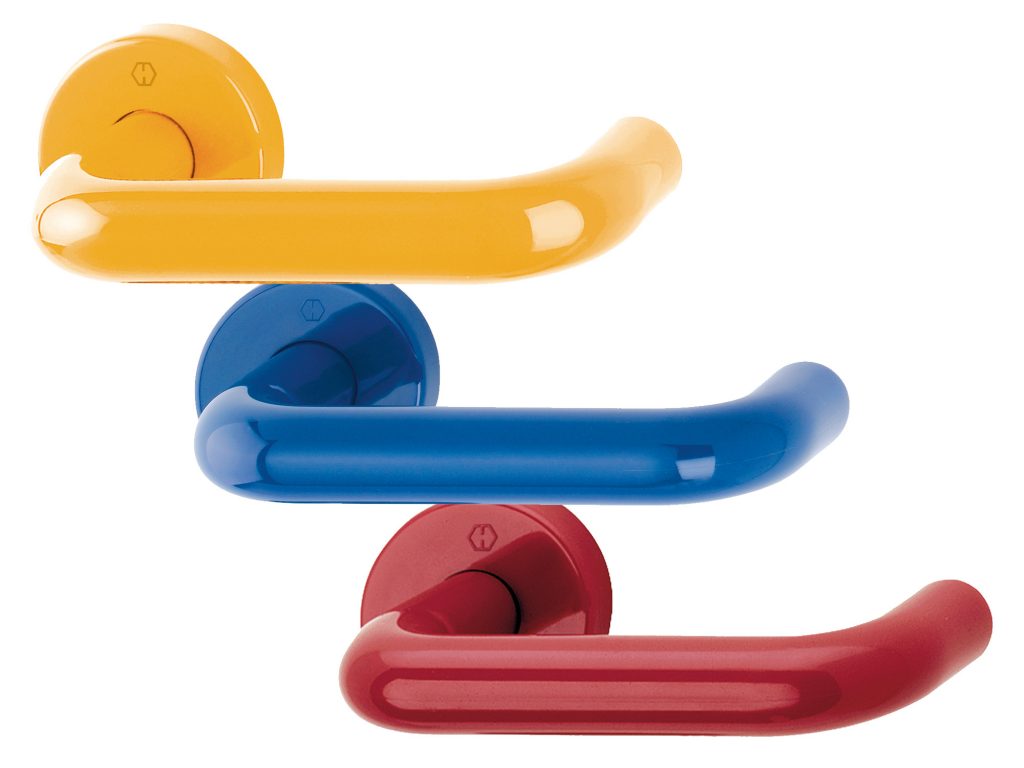Andy Matthews, head of sales at HOPPE (UK), discusses the scale of repair and maintenance works needed in schools across the country and how nylon products can help door manufacturers looking to work in this space.
The Government has recently announced the third set of schools that will be receiving funding to carry out major rebuilding and refurbishment works under the School Rebuilding Programme.

In order to qualify for funding, schools had to show they had at least 1,200 square metres of “severe condition need” (defined as the modelled cost of the remedial work to repair or replace all defective elements in the school estate) to apply. The government has said it prioritised the applications with “structural or safety issues that mean a block is not fit for use or is likely to become unfit for use imminently because it poses a risk to users”, followed by applications showing “severe deterioration” in external walls, roofs, windows or doors.
More than 1,100 schools applied for the last round of funding with 61 being awarded grants in July 2022. This brings the total number of projects in the programme to 161 and with only 500 spaces up for grabs throughout the duration of the 10-year School Rebuilding Programme, it looks like many schools won’t be able to access this much-needed funding.
The Condition of School Buildings Survey published in May 2021 identified that the total condition need is £11.4 billion. Interestingly, schools in the Midlands need the most repair work, with the average remedial work needed per school in the East and West Midlands costing £605,805 and £699,983 respectively.
Within the 22,031 schools reviewed as part of the survey, assessors noted 374,782 occurrences of work needed to external walls, windows and doors, and 261,568 to internal walls and doors. While these figures only offer a snapshot in time, it still provides a good indicator of the level of work needed to improve the conditions of schools across the UK.
Repair and maintenance within schools
HOPPE (UK)’s own research among education estates managers revealed that just under two thirds of respondents said they carry out repairs and refurbishments throughout the year, as and when it is needed. They also identified door handle levers and door closers as the items of hardware that need be replaced most often.
Whether door hardware is being replaced as part of reactive or ongoing maintenance plans, or installed in newly built schools, nylon is a great choice for several reasons.
From an ongoing maintenance perspective, nylon is easy to clean and doesn’t discolour with the use of mild detergents or disinfectants. A finish that has been tried and tested for more than 30 years, it is also suitable for sports facilities, changing rooms and showers because of its corrosion-resistant properties.
HOPPE (UK)’s nylon range is available in 10 colours and we’ve seen these be used to create a colour coding system that allows it to be used to identify areas in buildings for specific use or access. For very young children, colour coding can also help with independence letting them know where they are in a building or which is their classroom. There may be some settings where the use of subtle colours, which are less visually stimulating, can prevent confusion or distraction. The more passive shades are also thought to aid concentration and can be soothing and calming.
In schools with special needs facilities, nylon can be a good choice because of its tactile nature. It offers anti-static properties and doesn’t feel cold to the touch. It is important to consider the visual contrast and comply with the light reflectance value (LRV) in British Standard BS8493:2008.
HOPPE (UK)’s nylon range is available in red rouge; claret; cobalt blue; midnight blue; ebony black; viridian green; diamond white; anthracite grey; dove grey and golden yellow. It has been BSEN1906 performance tested and the Steel Cored version has also been included in BS EN1634 part 1 fire door testing.
Coordinating nylon accessories – including signage, hooks, finger plates, back plates, pull handles, interior handles set on roses and escutcheons – are also available, making it really easy for specifiers to order everything required for each door.
